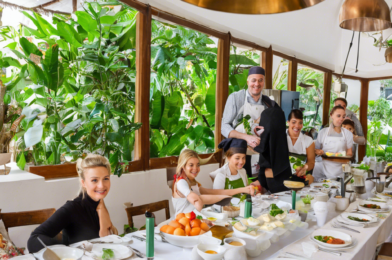Are you interested in exploring new cultures through food? Cooking classes abroad offer a unique opportunity to immerse yourself in the culinary traditions of different countries while honing your cooking skills. Whether you are a seasoned chef or a beginner in the kitchen, participating in a cooking class during your travels can be a rewarding and enriching experience.
One of the key benefits of taking cooking classes abroad is the chance to learn from local chefs who are experts in their cuisine. These instructors not only teach you how to prepare traditional dishes but also share insights into the cultural significance of the ingredients and cooking techniques used. By engaging with these culinary experts, you can gain a deeper understanding of the food culture of the country you are visiting.
Moreover, cooking classes abroad often provide hands-on experience in local markets, where you can select fresh produce and ingredients for your dishes. This immersive approach allows you to connect with the local food scene and appreciate the importance of using high-quality, seasonal ingredients in cooking. Shopping for ingredients in bustling markets can also be a fun and interactive way to learn about the staple foods of the region.
In addition to learning new recipes and cooking techniques, participating in cooking classes abroad can be a great way to meet like-minded travelers from around the world. Cooking is a universal language that brings people together, and sharing a meal prepared together can create lasting memories and friendships. Whether you are traveling solo or with a group, a cooking class can be a social and enjoyable experience that enhances your trip.
Cooking classes abroad offer a hands-on learning experience that goes beyond just following a recipe. You have the opportunity to work with unfamiliar ingredients, spices, and cooking equipment, challenging your culinary skills and creativity. The guidance and support of experienced chefs help you navigate these new culinary territories, building your confidence in the kitchen and inspiring you to experiment with different flavors and techniques.
Furthermore, cooking classes abroad often include a cultural component, where instructors share stories and traditions related to the dishes being prepared. This cultural exchange adds depth to your cooking experience, allowing you to appreciate the historical and social context of the food you are preparing. Understanding the cultural significance of certain dishes can enhance your connection to the cuisine and deepen your appreciation for the culinary heritage of the region.
Another advantage of taking cooking classes abroad is the opportunity to bring home new recipes and cooking skills that you can incorporate into your daily life. Whether it’s mastering the art of making handmade pasta in Italy or learning how to prepare authentic Pad Thai in Thailand, the knowledge and techniques you acquire during your cooking class can enrich your culinary repertoire and inspire your future cooking endeavors. Sharing your newfound skills with friends and family can also be a delightful way to extend the cultural experience beyond your travels.
In conclusion, cooking classes abroad offer a multifaceted and enriching experience for travelers seeking to explore the world through food. From learning from local chefs and shopping in vibrant markets to connecting with fellow food enthusiasts and delving into the cultural roots of dishes, participating in a cooking class can be a highlight of your travel itinerary. Whether you are passionate about cooking or simply curious about different cuisines, embarking on a culinary journey during your travels can broaden your culinary horizons and create lasting memories of your adventures abroad.









